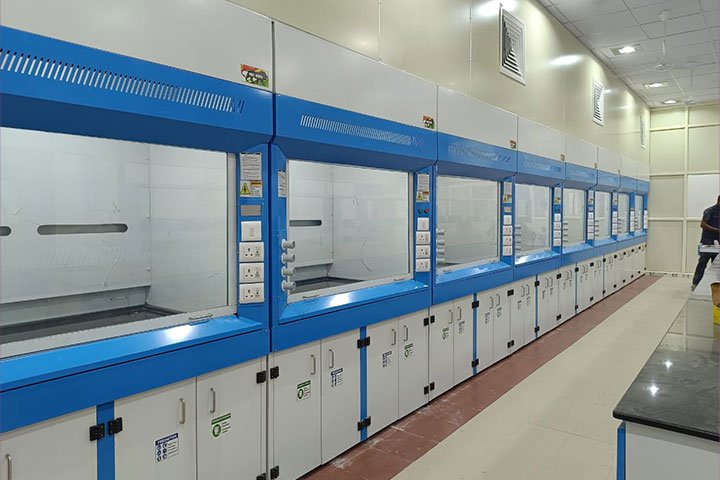
Laboratory Fume Hoods
The fundamental containment principle underlies the operation of fume hoods. By keeping the pressure within the hood lower than the pressure inside the lab, they are essentially made to ensure the safety of the workers that are employed there. At a specified sash opening, the LAB MAKERS INDIA fume hood operates efficiently and safely at a face velocity of 100 fpm (0.5 mtr/sec). To make it safer, it will be constructed with twin skins. Depending on the needs of the experiment, it includes utilities and electrical components. Steel and polypropylene [PP] fume hoods are constantly available, depending on the needs.
- ✔️ Auto Bypass Fume Hoods
- ✔️ Auxiliary Fume Hoods
- ✔️ Bench Top Fume Hoods
- ✔️ Walk-in Fume Hoods
- ✔️ Equipped With All Advanced Features
- ✔️ Highest Safety Standards
- ✔️ Available In Different Sizes
- ✔️ Highly Energy Efficient
- ✔️ Multiple Choice Of Automation
- ✔️ Vast Range Of Colors To Select
What Called Fume Hood :-
The laboratory fume hood is a ventilated enclosure or cupboard where all experiments involving poisonous or hazardous vapors can be conducted. This ensures that the fumes and vapors are diluted and safely vented out of the laboratory, ensuring a safe working environment for both people and the lab environment.
The Purpose Of Fume Hood :-
The goal is to stop contaminants from escaping into the lab by capturing, containing, and removing them.
How It’s Works :-
In order to reduce installation and contact, contaminants within the hood's work area are drawn away from the operator. An exhaust blower draws air from the lab space and forces it into and through the hood and exhaust system to create airflow into the hood. Face velocity is a measurement of this pull upon hood opening. The pattern of airflow into and through the hood is controlled by a baffle and other aerodynamically designed elements. The hood's duct system then allows the contaminated air to be sufficiently dispersed at a manageable low concentration outside after being diluted with room air.